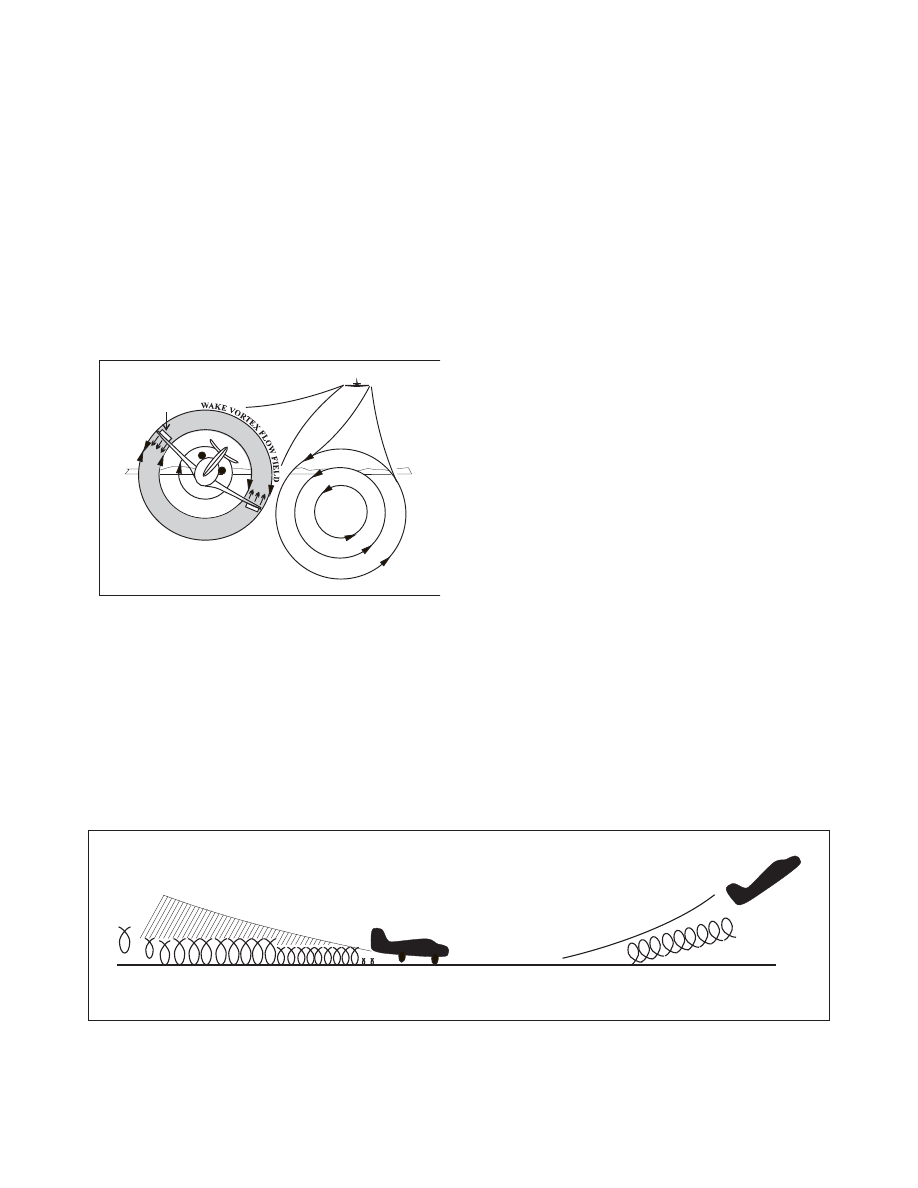
AIM
4/3/14
7−3−2
Wake Turbulence
2.
Counter control is usually effective and
induced roll minimal in cases where the wingspan
and ailerons of the encountering aircraft extend
beyond the rotational flow field of the vortex. It is
more difficult for aircraft with short wingspan
(relative to the generating aircraft) to counter the
imposed roll induced by vortex flow. Pilots of short
span aircraft, even of the high performance type, must
be especially alert to vortex encounters.
(See FIG 7−3−2.)
FIG 7
−3−2
Wake Encounter Counter Control
COUNTER
CONTROL
3.
The wake of larger aircraft requires the
respect of all pilots.
7
−
3
−
4. Vortex Behavior
a.
Trailing vortices have certain behavioral
characteristics which can help a pilot visualize the
wake location and thereby take avoidance precau-
tions.
1.
Vortices are generated from the moment
aircraft leave the ground, since trailing vortices are a
by−product of wing lift. Prior to takeoff or touchdown
pilots should note the rotation or touchdown point of
the preceding aircraft. (See FIG 7−3−3.)
2.
The vortex circulation is outward, upward
and around the wing tips when viewed from either
ahead or behind the aircraft. Tests with large aircraft
have shown that the vortices remain spaced a bit less
than a wingspan apart, drifting with the wind, at
altitudes greater than a wingspan from the ground. In
view of this, if persistent vortex turbulence is
encountered, a slight change of altitude and lateral
position (preferably upwind) will provide a flight
path clear of the turbulence.
3.
Flight tests have shown that the vortices from
larger (transport category) aircraft sink at a rate of
several hundred feet per minute, slowing their
descent and diminishing in strength with time and
distance behind the generating aircraft. Atmospheric
turbulence hastens breakup. Pilots should fly at or
above the preceding aircraft’s flight path, altering
course as necessary to avoid the area behind and
below the generating aircraft. (See FIG 7−3−4.)
However, vertical separation of 1,000 feet may be
considered safe.
4.
When the vortices of larger aircraft sink close
to the ground (within 100 to 200 feet), they tend to
move laterally over the ground at a speed of 2 or
FIG 7
−3−3
Wake Ends/Wake Begins
Touchdown
Rotation
Wake Ends
Wake Begins